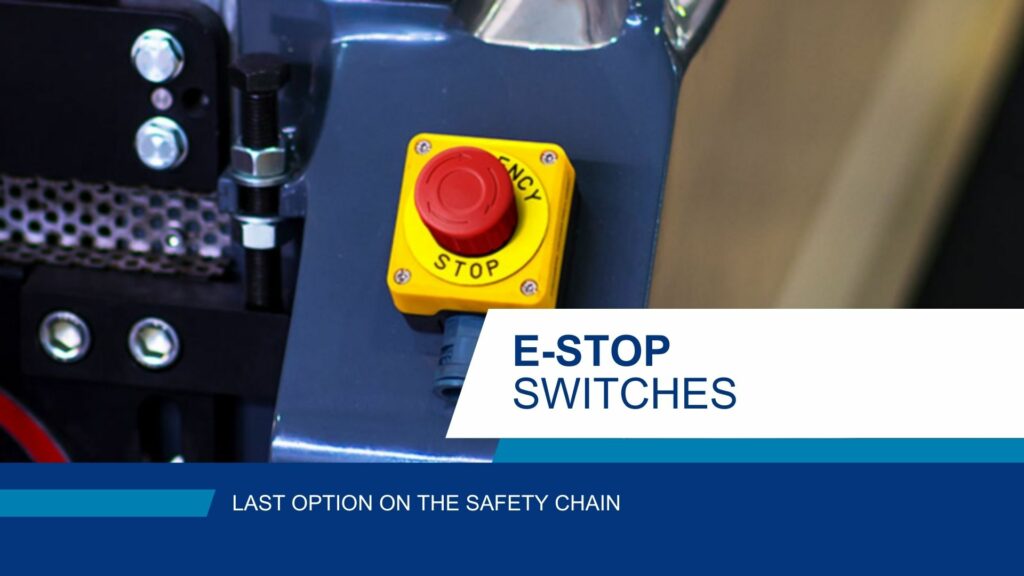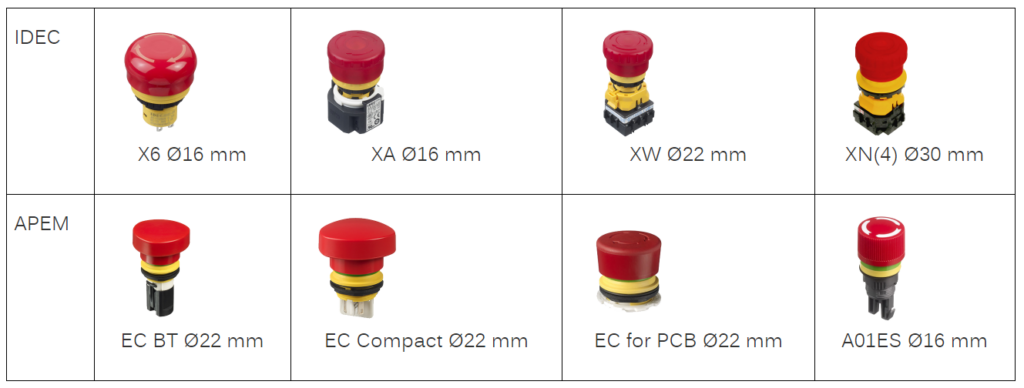Last option on the safety chain: Emergency-stop switches are one of those rare things like firefighters that you hope you never have to use. They are the safety solution for that unfortunate situation when everything else has failed.


Ideally, the E-stop should never be activated. The machine designer should at first think of what can make the machine safer to use and maintain, in this order:
Rethink and redesign the safety-critical parts of the machine. Add mechanical solutions and protections to prevent access to the hazard. If all the above are not enough, what electronic options are there?
Last point and if possible what should be avoided – what PPE is required to operate this machine safely? On top of all these steps comes the E-stop switch.
E-stops have become an everyday sight with their easily recognizable mushroom with a red top. They are everywhere – not just in industrial applications, like remote controls and belly boxes, AGVs and walkie pallet jacks, machine tools and production lines, but also in everyday life, for example on the escalator you take in shopping centers or the automatic door to your dentist.
As technological development moves toward more and more electrical vehicles, the use of E-stops will continue to expand. The requirements for emergency-stop switches depend very much on the application they are used on and the environment the machine is in.

DEMANDS ON RELIABILITY
Emergency-stop switches have always needed to be reliable – the option of last resort must work, and it must not be mistaken with other functionalities. If it fails, it should be without threatening the safety of the workers around the machine. That is why the standards are evolving and new solutions are available on the market such as fail-safe options or self-monitored contacts for the most critical applications.


AMOUNT AND LOCATION
As the automated production lines get longer and more complex, and the machines include remote controls for more efficient operation – therefore, the hard questions are: where do you put the Emergency-stop switch, how many switches, how do they communicate with each other, and which part of the line is the E-stop switch related to?
In case of emergency, the faster the E-stop is actuated, the better. So, the E-stop must be within easy reaching distance from the worker but not in a location where it may be mistakenly actuated. In addition, it should be at each location without disturbing the entire line if possible.
Remote control applications can also be tricky: is the E-stop working or not? And which part of the machine is it going to stop?
The general rule is where the operator works, so you must establish the points and add a switch to each location, including the remote control. How they communicate will be very dependent on the design and purpose of the machine.
SIZE
As devices are becoming smaller and Emergency-stop switches are required on remote controls, the size of the switch is increasingly more important – this includes both below the panel as well as the above panel height.
Because the E-stop should be located near the worker but not be too intrusive so it wouldn’t be activated by mistake, machine designers are looking for smaller devices. It should be easily reachable for the worker in an area already populated with many other controls.
Here are some options for Emergency-stop switches that fit these trends of compact size and demanding requirements for reliability.





